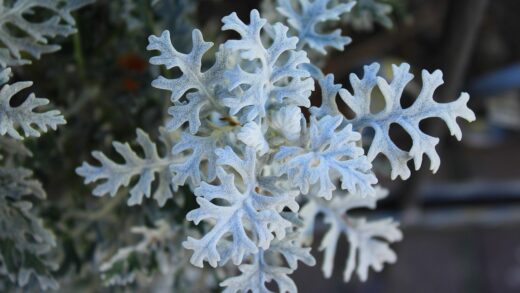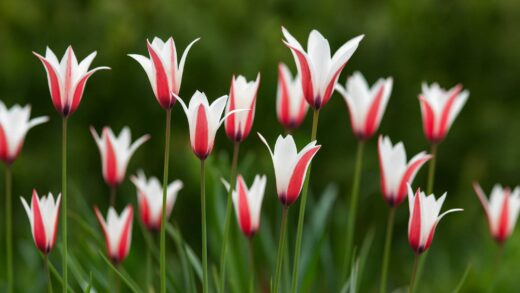The German iris, a classic and beloved perennial, offers spectacular blooms with minimal demands, provided its fundamental needs are met with understanding and consistency. Successful cultivation hinges on a few key principles: providing excellent drainage, ensuring adequate sunlight, and respecting its natural growth cycle, particularly the need for a summer dormancy period. Unlike many other garden plants, the German iris thrives on a degree of neglect and can suffer from over-attentive care, especially excessive watering or fertilizing. Mastering the art of iris care means learning to provide the right conditions at the right time, allowing these resilient plants to perform at their peak year after year with grace and reliability.
Proper care begins with understanding the plant’s unique structure, specifically its rhizome. This fleshy, horizontal stem grows at or just below the soil surface and is the plant’s primary storage organ for nutrients and water. It is crucial that the top of the rhizome receives sunlight and air, as this helps to prevent rot and encourages flowering. Therefore, deep planting or heavy mulching directly over the rhizomes are two of the most common mistakes that lead to poor performance. A well-cared-for iris clump will expand over time, signalling the need for division every few years to maintain its vigor and blooming capacity. This periodic renewal is an essential part of its long-term care strategy.
The annual life cycle of the German iris dictates the timing of essential care tasks. Following the spring bloom, the plant focuses its energy on developing new rhizomes and storing resources for the next year’s display. This post-bloom period is critical for watering and light feeding, supporting the growth that will yield future flowers. As summer progresses into its hottest and driest phase, the iris naturally enters a semi-dormant state where it requires less water. Recognizing and respecting this rhythm is paramount to preventing the rhizomes from succumbing to bacterial or fungal diseases, which are often exacerbated by warm, wet conditions.
Ultimately, consistent and knowledgeable care translates into a stunning floral display and a healthy, multiplying plant colony. This involves more than just routine tasks; it requires observation and response to the plant’s condition. Vigilance for signs of pests or disease, timely removal of spent flower stalks, and a proper autumn cleanup to minimize overwintering problems are all integral components of a comprehensive care regimen. By adhering to these well-established horticultural practices, any gardener can cultivate a thriving and impressive stand of German irises that will be a garden highlight for many years to come.
Understanding the basics of iris care
The foundation of successful German iris cultivation lies in appreciating the specific needs of its rhizomatous root system. The rhizome is not a true root but a modified, horizontal stem that functions as a vital storage organ. It must be planted very shallowly, with its top surface exposed to the sun and air, or at most, covered with a very thin layer of soil. This exposure to sunlight is crucial for initiating the development of the following year’s flower buds. Burying the rhizome too deeply is a primary cause of flowering failure and greatly increases the risk of rot, especially in heavy or damp soils.
More articles on this topic
Beyond planting depth, the plant’s annual growth cycle dictates its care requirements throughout the year. Active growth and flowering occur in the spring, a period when the plant utilizes the energy stored in the rhizome from the previous season. After the blooming period concludes, the plant enters a critical phase of vegetative growth, where it develops new fans of leaves and new sections of rhizome. It is during this late spring and early summer period that the plant requires adequate moisture and nutrients to build up reserves for the next year. This is the time to ensure the plant is supported, not when it is in full bloom.
Come mid-to-late summer, German irises naturally enter a period of semi-dormancy, particularly in warmer climates. This is a survival mechanism to cope with heat and potential drought. During this phase, their water requirements decrease significantly, and it is crucial to avoid overwatering. Excessive moisture around the rhizomes in the heat of summer is a leading cause of bacterial soft rot, a destructive disease that can quickly turn a healthy rhizome into a foul-smelling mush. Understanding this dormant period helps prevent well-intentioned but harmful over-care.
Finally, long-term health is maintained through periodic division. Over three to five years, an iris clump can become crowded, with the central, older rhizomes losing their vigor and flowering potential. This congestion also restricts air circulation and can create a favorable environment for pests and diseases. Dividing the clump, discarding the old central parts, and replanting the healthy, younger rhizomes revitalizes the planting, ensures continued prolific blooming, and is an essential practice for the sustained care of German irises.
Soil and location selection
The single most important factor for the long-term health of German irises is excellent soil drainage. These plants are exceptionally intolerant of “wet feet,” meaning their rhizomes cannot sit in waterlogged soil for any length of time. The ideal soil is a sandy loam or a light clay that has been amended to improve its structure and drainage capacity. In gardens with heavy clay, creating raised beds or amending the soil generously with coarse sand, pine bark fines, and well-composted organic matter is not just beneficial but absolutely essential for preventing rhizome rot.
More articles on this topic
When selecting a planting location, sunlight is the next critical consideration. German irises require a minimum of six to eight hours of direct sunlight per day to flourish and produce a robust display of flowers. While they may survive in partial shade, their blooming will be significantly reduced, and the foliage may become elongated and weak as it stretches towards the light. A location with full morning sun and some light afternoon shade can be ideal in very hot climates, as this can help prevent the flowers from scorching while still providing enough light for energy production.
Soil pH also plays a significant role in the overall health and nutrient uptake of German irises. They perform best in a soil that is slightly acidic to neutral, with a pH range of approximately 6.5 to 7.5. Before planting, it is a wise practice to conduct a soil test to determine the existing pH and nutrient levels. If the soil is too acidic, it can be amended with dolomitic limestone, whereas alkaline soils can be made more suitable with the addition of elemental sulfur or organic materials like peat moss or compost.
Finally, consider air circulation when choosing a site. Good air movement around the leaves helps them to dry quickly after rain or irrigation, which significantly reduces the incidence of fungal leaf spot diseases. Avoid planting irises in crowded garden beds where they are tightly packed against other perennials, or in low-lying areas where air can become stagnant. Giving them adequate space not only promotes health but also allows the distinctive sword-like foliage and beautiful flowers to be fully appreciated.
Watering and moisture management
Proper watering for German irises is a practice of strategic application rather than routine drenching. The most critical period for consistent moisture is after planting or transplanting, when the new rhizomes are establishing their root systems. During this time, typically in late summer or early autumn, the soil should be kept moderately moist to encourage strong root development before the onset of winter. This might require watering deeply once a week if there is no significant rainfall. However, even during this establishment phase, the soil should be allowed to dry out slightly between waterings to prevent the risk of rot.
Once established, German irises are remarkably drought-tolerant plants, thanks to the water and nutrients stored in their fleshy rhizomes. For mature clumps, natural rainfall is often sufficient to meet their needs in many temperate climates. Supplemental irrigation should only be provided during prolonged periods of drought, especially during the crucial post-bloom period when the plant is actively growing and forming the buds for the following year. When watering is necessary, it is best to apply it deeply and infrequently, thoroughly soaking the root zone and then allowing the soil to dry out completely before watering again.
The method of watering is as important as the frequency. It is highly advisable to use drip irrigation, soaker hoses, or to water carefully at the base of the plants. Overhead watering, which wets the foliage and flowers, should be avoided whenever possible. Wet leaves, especially in humid conditions or when the foliage remains damp overnight, create the perfect environment for the development and spread of fungal diseases like leaf spot. Watering early in the day allows the sun and air to quickly dry any moisture that may have splashed onto the leaves.
A common and fatal mistake is to treat irises like other moisture-loving perennials. During the summer heat, their natural inclination is to slow down their growth, and their water requirements diminish. Continuing to water them on a regular schedule during this semi-dormant period is the primary cause of bacterial soft rot. The key to successful iris moisture management is observation: check the soil moisture a few inches below the surface and only apply water when it is truly dry. This careful approach respects the plant’s natural resilience and protects it from the dangers of excessive moisture.
Nutrition and feeding strategies
German irises are not considered heavy feeders, and an overly rich soil or excessive fertilization can do more harm than good. A soil that is too high in nitrogen will promote lush, weak foliage growth at the expense of flower production. This soft, rapid growth is also more susceptible to diseases and pest infestations, particularly bacterial soft rot and iris borers. The goal of a feeding strategy should be to provide a balanced supply of nutrients that supports strong rhizome development and abundant blooms without encouraging excessive vegetative growth.
The ideal fertilizer for German irises is one that is low in nitrogen and higher in phosphorus and potassium. A balanced fertilizer with an N-P-K ratio such as 5-10-10 or 6-10-10 is an excellent choice. Phosphorus is crucial for root development and flower production, while potassium contributes to the overall vigor and disease resistance of the plant. Applying a light dressing of this type of granular fertilizer in early spring, just as new growth begins to emerge, provides the plants with the necessary nutrients for the upcoming season. A second, very light application can be made about a month after flowering to support the development of new rhizomes.
When applying fertilizer, it is imperative to do it correctly to avoid damaging the plants. Granular fertilizers should be sprinkled around the base of the iris clump, not directly on top of the exposed rhizomes, as the chemical salts can cause burns. After application, the fertilizer should be gently worked into the top layer of soil and then watered in thoroughly. This ensures that the nutrients are dissolved and carried down to the root zone where they can be absorbed by the plant. Never fertilize irises late in the growing season, as this can stimulate new growth that will not have time to harden off before winter.
For those who prefer organic methods, incorporating well-rotted compost or bone meal into the soil at planting time can provide a slow and steady release of nutrients. Bone meal is an excellent source of phosphorus and is a traditional amendment for irises. A light top-dressing of compost around the plants in the spring can also be beneficial, providing a balanced range of micronutrients and improving soil structure. However, avoid using fresh or uncomposted manure, as its high nitrogen content and potential to harbor pathogens can be detrimental to the health of the rhizomes.
Post-flowering care and maintenance
The period immediately following the bloom is one of the most important times for the care and maintenance of German irises. Once a flower has faded, the priority is to prevent the plant from expending energy on seed production. The entire flower stalk should be cut back to its base, where it emerges from the rhizome. This practice, known as deadheading, redirects the plant’s energy towards developing strong new rhizomes and foliage, which are essential for storing the resources needed for the following year’s floral display. Promptly removing the stalks also improves the overall appearance of the garden bed.
During this post-bloom phase, the iris foliage should be left completely intact. The leaves are the plant’s solar panels, capturing sunlight and converting it into energy through photosynthesis. This energy is then stored in the newly developing rhizomes, fueling their growth and the formation of next season’s flower buds. Cutting the foliage back prematurely after flowering is a detrimental practice that will significantly weaken the plant and lead to a diminished or non-existent bloom the following year. The leaves should only be trimmed or removed if they become damaged or show signs of disease.
This is also a critical time to monitor for pests and diseases. The iris borer moth lays its eggs in late summer and autumn, and the young caterpillars begin their destructive journey in the spring. Inspecting the leaves for tell-tale signs of their activity, such as water-soaked streaks or notched edges, is crucial for early intervention. Fungal leaf spot can also become more prevalent as the season progresses. Maintaining good garden hygiene by keeping the area around the iris clumps free of weeds and debris will improve air circulation and help to minimize these problems.
Watering should be managed carefully after flowering. The plants are still in an active growth phase and will appreciate a deep watering if conditions are dry, which supports the expansion of the rhizomes. However, as the heat of mid-summer approaches, the plants will begin to enter their semi-dormant phase. It is at this point that watering should be gradually reduced to prevent the onset of rot. Observing the plants and the soil conditions is key to providing the right amount of moisture during this transitional period.
Long-term health and division
Ensuring the long-term health and vitality of German irises fundamentally involves periodic division of the rhizome clumps. Typically, this maintenance is required every three to five years, or whenever the center of the clump appears crowded and flowering begins to diminish. Division is not just for propagation; it is a crucial renewal process that invigorates the plants, prevents overcrowding, and reduces the likelihood of pest and disease problems that can fester in dense, overgrown clumps. The best time to undertake this task is during the plant’s summer dormancy, usually from July to early September, which allows the newly planted divisions sufficient time to establish roots before winter.
The process of division begins with carefully lifting the entire iris clump out of the ground using a garden fork. Once lifted, the soil can be gently shaken or washed off the rhizomes to make them easier to inspect and separate. The goal is to separate the younger, healthier rhizomes, which are typically found on the outer edges of the clump, from the older, often woody rhizomes in the center. A sharp, clean knife is used to cut the rhizomes apart, ensuring that each new division consists of a healthy, firm section of rhizome with at least one or two “fans” of leaves attached.
Before replanting, the divisions should be prepared for their new location. The leaves are traditionally trimmed back by about two-thirds, into a fan shape. This reduces the stress on the newly planted rhizome by limiting water loss through transpiration and also prevents the plant from being rocked by the wind before its new roots can anchor it securely in the soil. It is also a good practice to inspect each rhizome division for any signs of disease or pest damage, such as the tell-tale holes of the iris borer or any soft, mushy spots indicating rot. Any compromised tissue should be cut away cleanly, and some growers even dip the cut ends in a fungicide powder as a preventative measure.
Replanting the divisions correctly is the final step in ensuring their future health. As with initial planting, the prepared rhizomes should be set in a shallow hole, with the top of the rhizome positioned at or slightly above the soil level. The roots should be fanned out and directed downwards into the soil. After firming the soil around the roots, the new plants should be watered in thoroughly to settle the soil and encourage new root growth. This regular cycle of division and replanting is the key to maintaining a perpetually beautiful and healthy display of German irises in the garden.


















